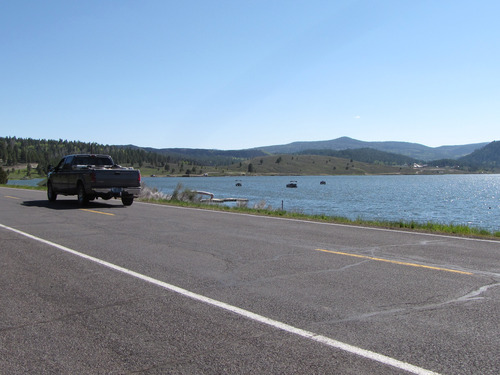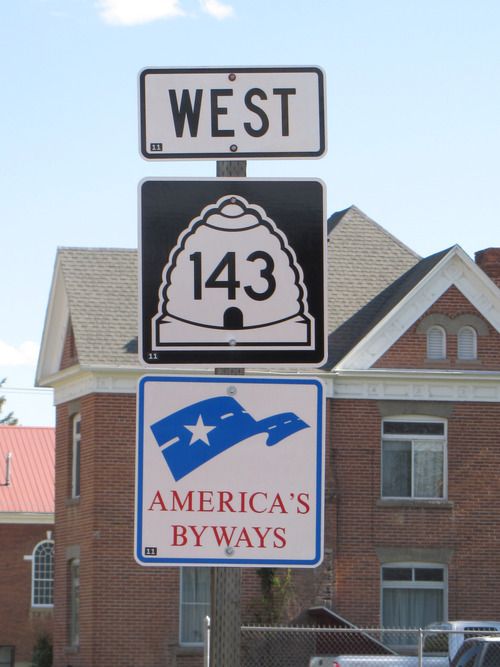This is an archived article that was published on sltrib.com in 2011, and information in the article may be outdated. It is provided only for personal research purposes and may not be reprinted.
Brian Head • A celebration over the weekend officially unveiled the National Scenic Byway designation for State Road 143, which winds through rolling hills sprouting pinyon-juniper trees just east of Panguitch through lush ranch country, beautiful lakes, a resort town, redrock cliffs and thick forests to Parowan on the western end of the highway.
The celebration on Friday and Saturday of the highway that passes through scenic country in portions of southern Utah's Garfield and Iron counties was held about eight months after it gained the official designation by a Federal Highway Administration committee in Washington, D.C.
The addition of SR 143 brings to eight the number of highways in Utah with the federal Scenic Byway designation. Nineteen other highways have a state byways designation.
A byway designation means that roads, through cooperation with the Utah Department of Transportation, get special consideration, and those in the federal system qualify for special grants and marketing projects.
Nancy Dalton, who spearheaded the committee that worked to get the coveted federal designation for SR 143, said the process is involved and lengthy, taking nearly a decade to complete. The committee recently was awarded a grant for more than $289,000 to conduct a management plan that would install special interpretive materials like information kiosks along the 60-mile route that also runs through the resort town of Brian Head, next to Cedar Breaks National Monument.
She said to be chosen as a byway, a road must have one or more intrinsic qualities in six areas: archaeology, culture, history, nature, recreation and scenery.
SR 143 was awarded the designation for its historical features, including districts in Panguitch and Parowan, the Parowan Rock Church and town cemetery.
Weekend activities in Panguitch to celebrate the SR 143 designation included dances and a quilt festival, which earned the new byway its moniker as the Patchwork Parkway.
The name comes from an experience in 1864, when some pioneer settlers from Panguitch lay quilts on the snow to walk all the way to Parowan to get winter supplies. The quilts were used in a leap-frog pattern because they kept travelers from sinking in the snow. From Parowan, the group returned to Panguitch with 50-pound sacks of flour using the same technique, probably saving the settlers from starvation.
On Friday, notes from travelers and area residents saying what they liked best about the highway were tied to helium-filled balloons and set adrift. New Scenic Byway designation signs were also unveiled along the route.
During a ceremony in Brian Head, Mayor Dutch Deutschlander, who moved to the town in 1976, said the designation came about through a partnership of members on the committee, of which he was one.
"It's been a long effort on the parts of Iron and Garfield County and the towns of Panguitch, Brian Head and Parowan," said the mayor.
Iron County Commissioner Alma Adams called the designation "a tremendous accomplishment" and said it will help bolster the tourism economy, which the area depends on heavily, in addition to agriculture and industry.
"I've lived here [Iron County] all my life and have never taken for granted the majestic beauty we have always appreciated," Adams said.
Gael Hill, the Scenic Byways coordinator for Utah in the state's tourism office, told the small gathering that getting a Scenic Byway designation is the best example of community pride and that the SR 143 committee is one of the most dynamic in the country for time devoted to the cause and money raised.
"This [designation] will help national and international visitors see where you live and share your stories," Hill said.





